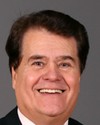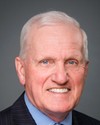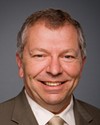Sir, let me just say there is no gulf between us. We have a unity of thought on this one that is absolutely complete.
Kids are flocking to our recruiting centres across our country. There is twice the number so far this year as during the same time last year. We have connected with the Canadian population. We'd like to do a little bit better with the minority communities across our country. We are trying to establish a relationship with them, but we know that is long term.
The overall point, sir, is that those young men and women who wear a uniform and go into Afghanistan will be trained to do the job. We're taking no shortcuts whatsoever. This is real business in every way and in every respect, and we're doing the training.
Secondly, you have to remember we're working now to 2008. The planning is done. The forestructure is working to come to full fruition for the rest of this year and for 2007. We're now actually looking at the first half of 2008 and being better able to share the load. So we're not asking somebody who has just come out this summer to go back in. We're looking a year and a half out for men and women coming out of recruiting systems from being a basic recruit. We have 252 people right now in our recruit school in that early stage. We have a year and a half to train them to be infantry soldiers.
We always use reservists on our operation. Habitually, we have about 20%. But the reality, sir, is that when they go on the mission, they have received exactly the same training as a regular force soldier, say, an airman or airwoman, has. In fact, we have them for a period of about of two years. In short, we almost have them as a soldier for that time. So we make sure they're trained.
We're going to look to those reservists much more as a way of building our regular force, as a way of doing this job, and as a way of helping some of these missions.





